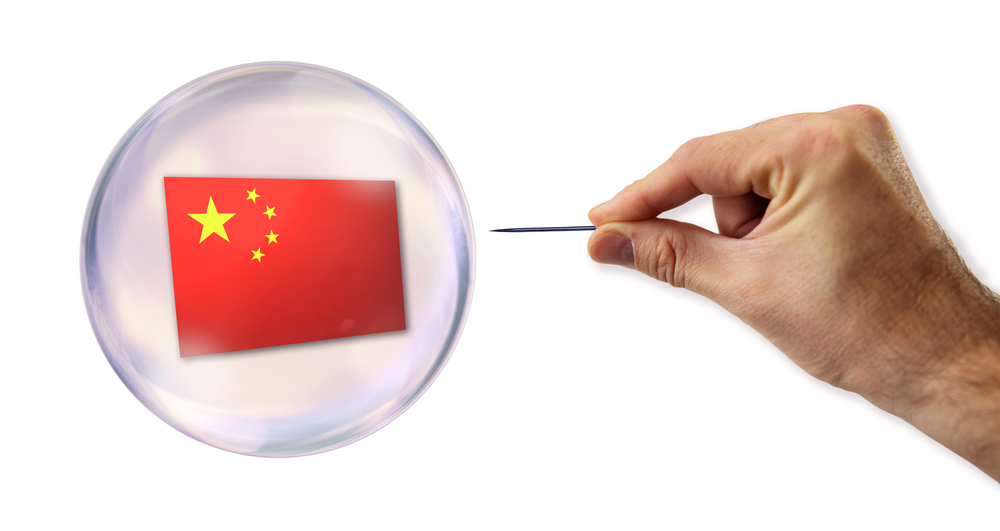China’s Falling Corn Imports: A Hidden Dark Story and the Looming Economic Bubble
China has long been a dominant player in the global agricultural market, importing vast quantities of corn to feed its massive population and support its growing livestock industry. But in recent months, a sudden and unexpected decline in corn imports has raised alarm bells across the international trade community, economists, and global commodity markets. While the drop in corn imports might appear as just a minor fluctuation in China’s trade patterns, it tells a much darker story—one of economic instability, a struggling agricultural sector, and a potential economic bubble on the brink of bursting.
For years, China has been the world’s largest importer of corn, driven by its need to secure enough grain to meet the demands of its thriving animal feed industry. But as China’s imports of corn have fallen, it has set off a chain reaction that could have profound implications for the country’s economy and the global food market.

The Falling Corn Imports: What’s Behind the Decline?
China’s corn imports in recent months have taken a significant hit, falling below expectations and leaving global markets perplexed. Official data shows that in 2023, China imported around 14 million metric tons of corn, a notable decrease from the 22 million metric tons imported the year before. This drop is largely attributed to a combination of domestic production issues, economic slowdown, and a complex web of political and economic factors.
Domestic Production Issues
One of the primary reasons behind the reduction in imports is the country’s own corn production. In recent years, China has invested heavily in boosting its agricultural output, with a focus on increasing self-sufficiency in staple crops like corn, wheat, and rice. However, despite these efforts, China’s domestic corn production has faced significant challenges. Climate change, extreme weather events, and regional disparities in agricultural productivity have made it increasingly difficult for China to achieve its desired level of self-sufficiency in corn.
For example, in 2023, a series of floods in key corn-producing regions, coupled with prolonged droughts in others, led to crop failures that further strained the country’s ability to meet demand. Additionally, the country’s over-reliance on synthetic fertilizers and intensive farming practices has led to soil degradation, reducing yields and contributing to long-term agricultural inefficiencies.
Economic Slowdown and Reduced Demand
The dramatic slowdown of the Chinese economy is another key factor contributing to the fall in corn imports. China’s economic growth has been faltering for several years, a trend that has been exacerbated by the aftermath of the COVID-19 pandemic. The country’s industrial output has weakened, consumer demand has been sluggish, and several sectors of the economy, particularly construction and real estate, are in crisis. As a result, the demand for corn, particularly in the animal feed sector, has seen a corresponding decline.
China’s livestock industry, which relies heavily on imported corn for animal feed, has been severely impacted by the downturn in the economy. With fewer consumers able to afford meat and other animal products, demand for feed has dropped. As a result, Chinese farmers have been scaling back on the number of livestock they raise, further reducing the need for imported corn.
The slowdown has also led to a decline in manufacturing, particularly in industries that rely on animal by-products, such as food processing and biofuels. This reduction in industrial demand for corn has led many to reassess their future requirements, adjusting downward the amount of corn they are willing to import.
Political and Trade Tensions
Another layer of complexity is added by China’s increasingly tense relationships with its major trading partners, particularly the United States and other Western nations. Trade tensions, tariffs, and geopolitical rivalries have impacted the flow of agricultural goods, including corn. In the wake of rising nationalism and political pressures, China has sought to reduce its reliance on foreign agricultural imports in favor of securing domestic supplies. This strategy of self-sufficiency is at odds with the country’s previous trade policies and has led to fluctuating import demand.
The U.S., which has long been one of China’s primary sources of corn, has seen its exports to China drop amid these tensions. Moreover, China has sought alternative suppliers, such as Brazil and Ukraine, but these countries face their own challenges, particularly the war in Ukraine, which has further destabilized global grain supply chains.
The Hidden Dark Story: Economic Instability
The sharp decline in corn imports points to a much darker story—one of economic instability. While China’s economy has shown signs of resilience in some sectors, the overall outlook remains grim. The country’s rapid economic expansion over the last few decades has led to an unsustainable accumulation of debt, particularly in the real estate and infrastructure sectors.
The Debt Bubble
China’s economy is heavily reliant on debt-fueled growth, and the country has accumulated a staggering amount of debt in recent years. According to estimates from the Institute of International Finance (IIF), China’s total debt reached more than 300% of GDP by 2023. Much of this debt is tied up in the real estate sector, where property developers have taken on enormous amounts of borrowing to fuel the construction boom.
The collapse of major property developers like Evergrande has exposed the deep vulnerabilities within the system, as these companies have defaulted on their debt obligations, triggering a cascade of defaults across the economy. The real estate sector, once a key driver of growth, is now in crisis, and the broader economy is struggling under the weight of this debt burden.
Inflation and Supply Chain Struggles
Alongside the debt crisis, China is grappling with rising inflation and a strained supply chain. The cost of living has increased, particularly for food and energy, as global supply chains have been disrupted by factors such as the war in Ukraine, the COVID-19 pandemic, and domestic inefficiencies. With higher costs of raw materials and energy, China’s manufacturing sector has faced rising costs, further eroding the country’s competitiveness in the global market.
The inflationary pressure has trickled down to consumers, who are now spending less. This has led to decreased demand for both domestic and imported goods, including corn. The impact of inflation is also being felt by farmers and agricultural producers, who face higher costs for fertilizers, fuel, and labor. In turn, these costs have been passed on to consumers in the form of higher prices, further dampening demand.
Demographic Challenges
China’s demographic problems are another hidden factor that may be exacerbating the economic slowdown. The country’s aging population, combined with a declining birth rate, means that the working-age population is shrinking. This demographic shift is having profound implications for China’s labor market, productivity, and long-term growth prospects.
A shrinking workforce puts additional pressure on the country’s economic model, which has long relied on cheap labor and mass production. The reduction in the workforce also means that there will be fewer consumers in the future, which could contribute to long-term stagnation and further reduce demand for goods like corn.
The Looming Economic Bubble
The situation in China has all the hallmarks of an economic bubble that is ready to burst. The combination of unsustainable debt levels, a slowing economy, rising inflation, and demographic decline suggests that the country’s economic model is in serious trouble. The declining demand for corn, while just a symptom, reflects deeper structural issues within the economy.
The real estate sector, in particular, is a ticking time bomb. The Chinese government has attempted to mitigate the fallout from the crisis by injecting liquidity into the system, but this has only exacerbated the problem, leading to an even larger debt burden. As the government continues to support the real estate sector through state-backed initiatives, the risk of a financial meltdown grows. If the bubble bursts, it could trigger a wave of defaults, collapse major financial institutions, and lead to a severe economic contraction.
The broader global economy will also feel the impact of China’s economic woes. As the world’s second-largest economy, China’s downturn could lead to a reduction in demand for global commodities, including oil, metals, and agricultural products. The ripple effects could destabilize markets and lead to a broader economic slowdown, with implications for both emerging and developed economies.
Conclusion
China’s falling corn imports are just the tip of the iceberg, signaling deeper economic troubles lurking beneath the surface. The country is grappling with a host of issues—ranging from a slowing economy and rising inflation to unsustainable debt and an aging population—that threaten to destabilize its economic future. The decline in corn imports is a reflection of the broader slowdown, and it could be a harbinger of worse things to come.
As China’s economic bubble teeters on the edge of collapse, the global economy will undoubtedly feel the consequences. The next few years will be crucial in determining whether China can navigate these challenges or whether the bubble will burst, ushering in a period of economic turmoil with far-reaching global implications. The world must watch closely as China’s economic story unfolds, as the fallout from a bursting bubble could reshape the global economic landscape for decades to come.












